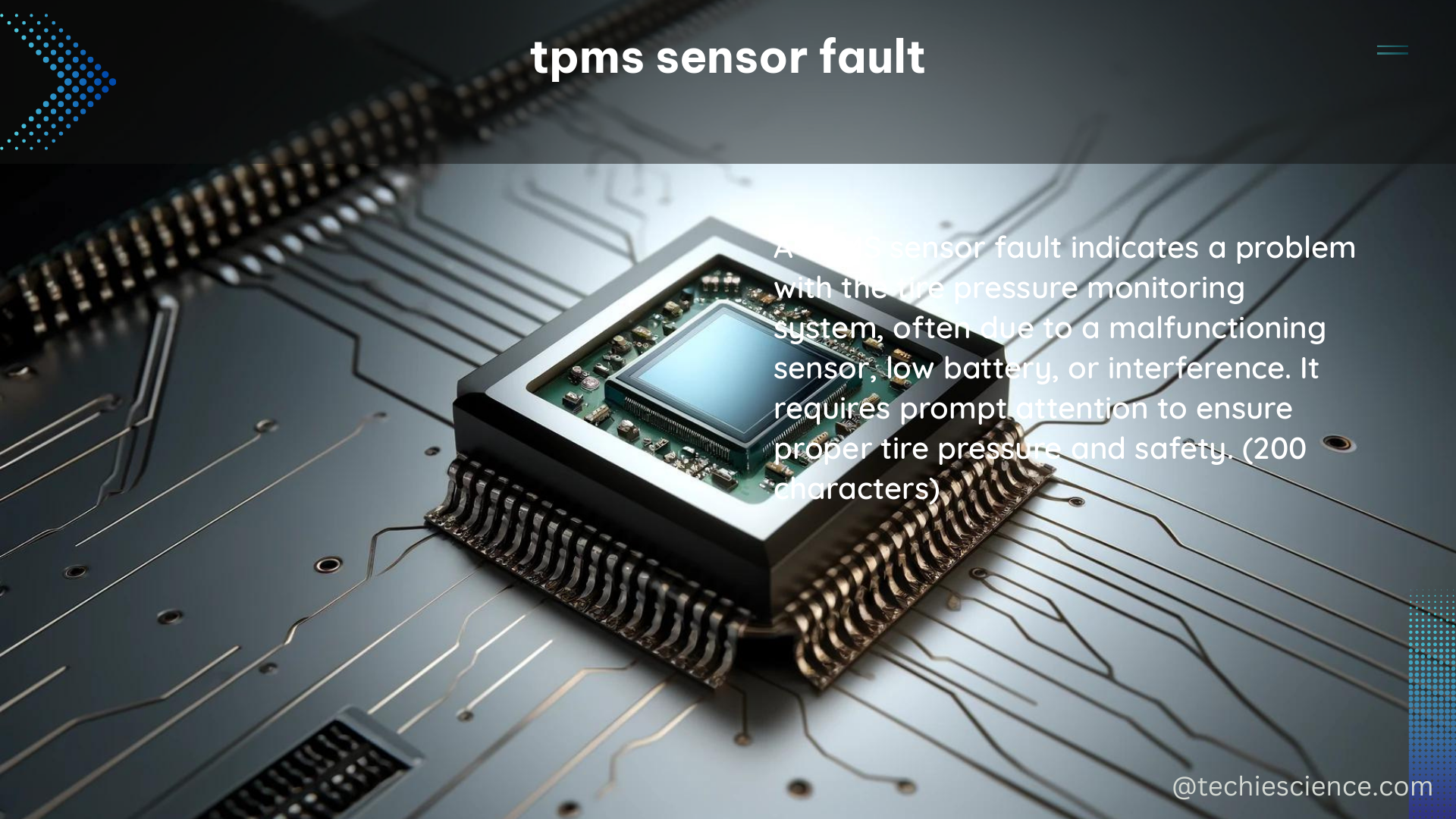The TPMS (Tire Pressure Monitoring System) sensor fault is a common issue in vehicles, which can be caused by various factors such as dead batteries, defective sensors, loose connections, or even communication issues with the Remote Keyless Entry system. To diagnose the specific cause of the TPMS sensor fault, quantifiable data and measurements are essential.
Understanding TPMS Sensor Characteristics
The resistance value of a healthy TPMS sensor typically ranges between 1.5 to 3 kOhms. A faulty sensor may exhibit a resistance value outside this range, indicating a potential issue with the sensor itself. Additionally, the voltage of a good TPMS sensor battery should be around 3 volts. Any significant deviation from this value may indicate a dead battery or a sensor malfunction.
| Sensor Condition | Resistance Range (kOhms) | Voltage Range (Volts) |
|---|---|---|
| Healthy | 1.5 to 3 | ~3 |
| Faulty | Outside 1.5 to 3 range | Significantly lower |
Diagnosing TPMS Sensor Fault

To diagnose the TPMS sensor fault, you can use a specialized TPMS tool or a scan tool that can communicate with the TPMS module and retrieve the specific DTC (Diagnostic Trouble Code) associated with the fault. The DTC can provide valuable insights into the root cause of the issue, such as a dead battery, a defective sensor, or a wiring problem.
Here are the common TPMS-related DTCs and their potential causes:
| DTC Code | Description | Possible Causes |
|---|---|---|
| C1201 | TPMS Sensor Fault | Defective sensor, low battery, loose connection |
| C1202 | TPMS Sensor Identification Fault | Sensor not learned/registered, sensor ID mismatch |
| C1203 | TPMS Sensor Communication Fault | Wiring issue, sensor malfunction, module failure |
| C1204 | TPMS Sensor Pressure Threshold Fault | Tire pressure out of range, sensor malfunction |
In some cases, the TPMS sensor fault may be intermittent and may not trigger a check engine light or a DTC. In such situations, monitoring the vehicle’s behavior over time and noting any patterns or triggers (such as driving over bumps or at high speeds) can help diagnose the issue.
Resetting and Relearning TPMS Sensors
After replacing a faulty TPMS sensor or rotating the tires, you’ll need to reset or relearn the TPMS sensors. The procedure typically involves activating each sensor and registering its unique ID with the TPMS module. The specific steps may vary depending on the vehicle manufacturer, so it’s essential to refer to the owner’s manual or the TPMS service manual for the correct procedure.
Here’s a general outline of the TPMS sensor reset/relearn process:
- Ensure all tires are at the recommended pressure.
- Use a TPMS tool to activate each sensor and record its unique ID.
- Follow the vehicle-specific relearn procedure, which may involve:
- Driving the vehicle for a certain distance
- Pressing a relearn button on the TPMS module
- Entering the sensor IDs into the TPMS module
- Verify the TPMS system is functioning correctly by checking the tire pressure readings.
Troubleshooting Intermittent TPMS Sensor Faults
If the TPMS sensor fault is intermittent and does not trigger a DTC, you’ll need to monitor the vehicle’s behavior and look for any patterns or triggers. Here are some steps to help diagnose an intermittent TPMS sensor fault:
- Observe the TPMS warning light:
- Note when the light illuminates and any conditions that may trigger it (e.g., driving over bumps, high speeds).
-
Monitor the light over several driving cycles to identify any patterns.
-
Check the TPMS sensor data:
- Use a scan tool to retrieve live TPMS sensor data, such as pressure, temperature, and battery voltage.
-
Look for any fluctuations or anomalies in the sensor readings that may indicate an intermittent issue.
-
Perform a road test:
- Drive the vehicle over various road conditions, including bumps, high speeds, and different terrain.
-
Monitor the TPMS warning light and sensor data during the test to identify any triggers for the fault.
-
Inspect the TPMS system components:
- Check for loose connections, damaged wiring, or any physical damage to the TPMS sensors.
- Ensure the sensors are properly secured and not interfering with other components.
By following these steps and gathering quantifiable data, you can effectively diagnose and resolve the root cause of an intermittent TPMS sensor fault.
Conclusion
Diagnosing and resolving a TPMS sensor fault requires a combination of quantifiable data, specialized tools, and vehicle-specific knowledge. By measuring the resistance and voltage values of the TPMS sensors, retrieving the associated DTCs, and following the vehicle-specific reset procedure, you can effectively isolate and fix the root cause of the TPMS sensor fault. Remember to always refer to the manufacturer’s instructions and use caution when working on your vehicle’s electrical systems.
References:
– Tire Pressure Sensor Fault: How to Isolate Which Sensor
– Tire Pressure Sensor Fault Indication
– Tire Pressure Sensor Fault

The lambdageeks.com Core SME Team is a group of experienced subject matter experts from diverse scientific and technical fields including Physics, Chemistry, Technology,Electronics & Electrical Engineering, Automotive, Mechanical Engineering. Our team collaborates to create high-quality, well-researched articles on a wide range of science and technology topics for the lambdageeks.com website.
All Our Senior SME are having more than 7 Years of experience in the respective fields . They are either Working Industry Professionals or assocaited With different Universities. Refer Our Authors Page to get to know About our Core SMEs.